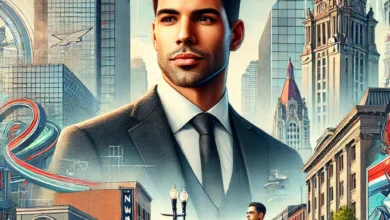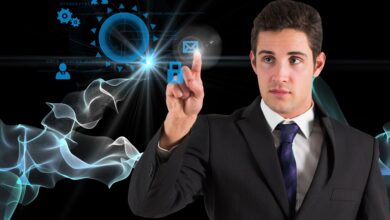From Pixels to Masterpieces: How AI Creates Stunning Visuals in Seconds

In recent years, artificial intelligence (AI) has profoundly influenced our ability to create and interact with digital visuals. What once required hours of skilled effort by artists and designers can now be achieved in seconds with the help of AI-driven technologies. Whether it’s photorealistic imagery, abstract art, or concept visuals, AI is reshaping the creative process and offering endless possibilities for both seasoned creators and newcomers.
The transformative impact of AI in visual art stems from its capacity to generate high-quality visuals in seconds. Users can turn simple text descriptions into stunning visuals with an AI image generator. Let’s dive into how these systems work, their practical applications, and the potential implications for creative industries.
Understanding AI-Powered Image Generation
AI image generation involves complex algorithms trained to process vast quantities of data, usually images, to learn and mimic visual styles, textures, and forms. The core technology often used in these applications is a form of machine learning known as Generative Adversarial Networks (GANs). GANs consist of two neural networks—a generator and a discriminator—that work in tandem. The generator creates images, while the discriminator assesses them for authenticity, pushing the generator to improve its output.
Other machine learning models, like diffusion models and transformers, also contribute to high-quality AI visuals. Diffusion models progressively refine images by reversing noise in an iterative process, while transformer-based models excel in image comprehension and composition. These advancements have enabled AI to create visuals that are more detailed, lifelike, and stylistically accurate than ever before.
How AI Tools Have Made Visual Creation Accessible
Creating visuals requires a background in art, technical software skills, or both. Today, however, AI tools empower virtually anyone to create artwork by simplifying the process. With a few descriptive keywords or prompts, users can generate complex and appealing images in seconds.
AI-driven platforms typically allow users to select or specify elements such as color schemes, art styles, lighting, and composition. The results range from realistic scenes and portraits to abstract and surrealist art. This accessibility means that individuals without any design background can now produce high-quality visuals for personal projects, marketing materials, social media, or creative experiments.
Practical Applications of AI-Generated Visuals
The rapid creation of high-quality images is not only exciting but also practical across various fields. Below are some of the most popular applications of AI-generated visuals.
1. Marketing and Advertising
AI-generated visuals are helping marketers create custom, attention-grabbing images tailored to specific campaigns. Unlike traditional stock images, which can feel impersonal or generic, AI-generated images offer brands a way to produce unique visuals that align with their messaging and audience preferences. This customization helps brands stand out in competitive digital spaces and provides more personalized content for ads, social media, and email campaigns.
2. Entertainment and Media
AI-generated visuals are also being used in the entertainment and media industries to create immersive experiences. Video games and virtual reality (VR) applications benefit from AI’s ability to generate landscapes, characters, and objects quickly, enhancing the visual quality of digital worlds. In addition, film and television production teams use AI to create concept art, visualize storyboards, and even generate digital assets.
3. Graphic Design and Illustration
Graphic designers and illustrators are discovering that AI can serve as a valuable tool for speeding up workflows. AI image generators can create quick mock-ups, brainstorm ideas, or generate visuals based on a brand’s aesthetic guidelines. AI tools can also replicate certain styles or textures, saving time and allowing designers to focus on higher-level creative decisions.
4. E-commerce and Product Visualization
AI is revolutionizing the way e-commerce businesses showcase their products online. AI can produce realistic images that help consumers visualize products in various settings and styles. For instance, a furniture retailer might use AI to generate visuals of a sofa in different room designs and lighting conditions, providing a better customer experience without extensive manual photoshoots.
How AI Balances Artistry and Technology
One of the more intriguing aspects of AI-generated visuals is how they bridge the gap between artistry and technology. AI has become adept at interpreting artistic elements such as color harmony, balance, and proportion. This means that, with the right input, an AI system can create images that adhere to fundamental art principles.
Despite AI’s strengths, some might argue that AI lacks genuine creativity since it only replicates patterns it has learned from existing data. However, many experts view AI as a tool that enhances human creativity rather than replacing it. Artists can experiment with new styles or generate variations of an image without starting from scratch, freeing up time for them to develop original ideas and refine their concepts.
Ethical Considerations in AI Image Generation
While AI image generation opens up new creative avenues, it also presents ethical considerations. One major concern is copyright and originality. Because AI models are trained on existing images found online, there is the potential for AI-generated images to closely resemble or imitate works created by real artists. As a result, some argue that AI-generated images should not be considered entirely original.
Another ethical challenge is AI’s potential to produce misleading or harmful images. Without appropriate safeguards, AI could be used to create realistic but deceptive visuals, such as deepfakes or manipulated news photos. These risks underscore the need for responsible AI development and usage, including transparency regarding the origins and intent behind AI-generated visuals.
The Future of AI in Visual Arts
The field of AI-generated art continues to evolve at a rapid pace. As technology advances, so too will the capabilities of AI to create visuals that blur the lines between digital and physical art. For example, AI could potentially be integrated with augmented reality (AR) to enable real-time customization of visual elements in the physical world. Imagine a retail store where products on display can change colors, patterns, or textures based on the customer’s preferences, all powered by AI.
In addition, AI-generated visuals may become increasingly interactive and responsive, creating experiences that adapt to user emotions or preferences in real time. This interactivity could be invaluable in industries such as education, where tailored visual content could be used to enhance learning experiences, or healthcare, where calming visuals might help patients feel more at ease.
AI’s potential to redefine artistic and visual experiences is boundless. From the way we create and consume art to the technologies that support these processes, the future of AI-generated art is bright, dynamic, and full of promise.
Final Thoughts
AI-powered image generation is transforming the creative landscape by making visual creation faster, more accessible, and increasingly sophisticated. This technological leap allows users to turn simple ideas into detailed, visually engaging images within moments, offering benefits across numerous industries and artistic practices.
While AI will continue to refine and expand its capabilities, human creativity and intuition remain central to the process. For now, AI provides an empowering tool, enabling artists, marketers, and designers alike to bring their visions to life in an instant. This fusion of human ingenuity and machine precision is setting the stage for a new era in digital artistry—where the line between pixels and masterpieces may soon be indistinguishable.




